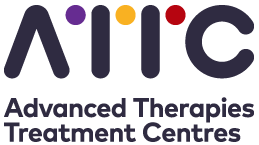
Case Studies
Developing a standardised pipeline for tumour sample collection across Greater Manchester
The challenge
In order to maximise the use of tumour samples as a starting material for advanced therapy medicinal product (ATMP) manufacture, a pipeline needs to be developed to allow collection and storage of cellular components from any patient undergoing surgical resection in Greater Manchester (GM). Collection protocols for melanoma, renal and ovarian cancer are currently in place but the collection and processing channels in these and further cancer types have not been standardised to allow maximum use of samples both in real-time and in the future when such treatments may be required. The samples that are placed into the biobank are also to be made available for translational research, increasing this valuable resource.
The solution
Supported by the Manchester Cancer Research Centre (MCRC) biobank, we have built upon our existing successes with melanoma, renal and ovarian cancers to standardise the collection and processing of samples across Manchester for all major cancer types. Human Tissue Authority (HTA) licenses that govern tissue collections and ethical agreements have also been put in place to allow collection from multiple sites across GM.
The results
This work will form the basis of integrated Standard Operating Procedures (SOPs) for a pipeline of samples from all major cancer types, including the identification of patients, consent and collection procedures, as well as the processing of samples in theatres, through to the onward delivery to processing labs and manufacturers. This now involves cross-trust working and the regulatory framework around this is being developed. In expanding our tissue collection protocols to include other tumour areas, e.g. metastatic colorectal cancer, high risk breast cancer and malignant glioma, we have been able to fully understand the challenges, similarities and differences of moving tumour collection from the research arena into a clinical grade process for patient treatment. A major challenge is maintaining the sterile environment of the sample without affecting the quality needed for the pathological processing (information used by a clinician to review patient status) of the sample. We are currently evaluating the role of needle core biopsy from these samples as a strategy to maximise tissue collection without compromising pathological assessment. Protocols developed from these experiments will be of value for other cancer sites.
Making further impact
The future project PRIME, a prospective tissue collection protocol for ovarian cancer cases, will enable us to formalise many of the pathways we had already developed, and will be used as an exemplar in a forthcoming clinical trial.
An integrated database allowing correlation of downstream analytical results between genomics, pathology and cellular therapeutic labs has also been explored to ensure that correct metadata (data about the data set) are being collected at local level to ensure that all research and clinical samples can be linked back to other analytical results (e.g. whole genome sequences collected within 100,000 genome project). These metadata are to be held by the biobanks within HTA regulations.

